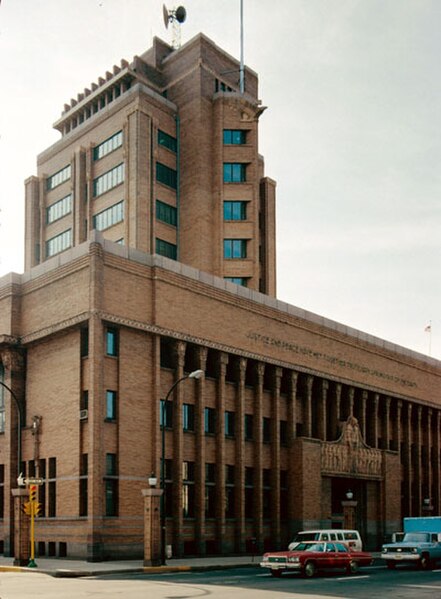Henry John Klutho (1873–1964) was an American architect known for his work in the "Prairie School" style. He helped in the reconstruction of Jacksonville, Florida after the Great Fire of 1901—the largest-ever urban fire in the Southeast—by designing many of the new buildings built after the disaster. This period lasted until the beginning of World War I. Several Jacksonville architects began their careers in the offices of Klutho's firm.
Henry John Klutho, ca. early 1900s
Old YMCA building
St. James Building
Old Larimer Library, in Palatka
Prairie School is a late 19th and early 20th-century architectural style, most common in the Midwestern United States. The style is usually marked by horizontal lines, flat or hipped roofs with broad overhanging eaves, windows grouped in horizontal bands, integration with the landscape, solid construction, craftsmanship, and discipline in the use of ornament. Horizontal lines were thought to evoke and relate to the wide, flat, treeless expanses of America's native prairie landscape.
Chicago Avenue side of architect Frank Lloyd Wright's home and studio in Oak Park, Illinois, showing post-1911 changes to studio building.
Robie House, 1910. It is considered by many to be the quintessential Prairie house
Harold C. Bradley House, Madison, Wisconsin, by Louis Sullivan and George Grant Elmslie
Woodbury County Courthouse, Iowa, by William L. Steele and Purcell and Elmslie (associate architects)








